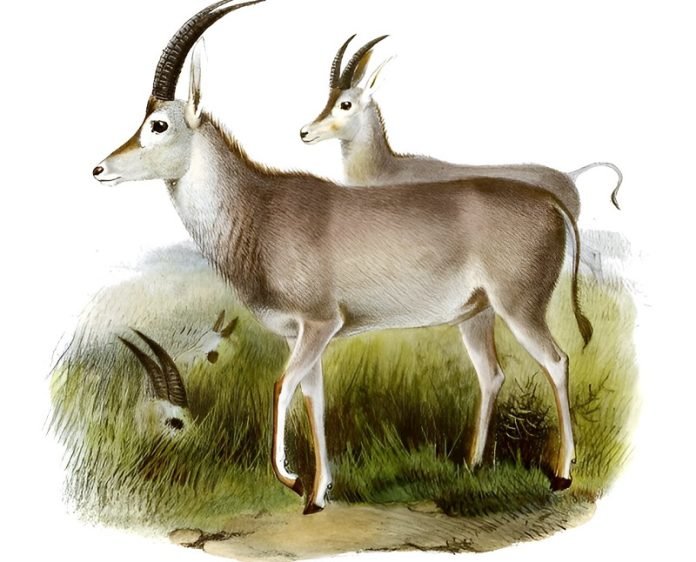
The blue antelope, known scientifically as Hippotragus leucophaeus, was a unique species that once roamed the plains of southern Africa.
With its distinct bluish-gray coat, it was closely related to other large antelopes like the sable and roan.
Despite being a robust species, the last known blue antelope was tragically shot around 1800, shortly after Europeans began colonizing the region.
Recently, a team of evolutionary biologists from the University of Potsdam, led by Professor Michael Hofreiter, has made significant strides in understanding why this species disappeared.
Their groundbreaking research, which involved extracting and studying the DNA from one of the last remaining specimens at the Swedish Museum of Natural History, provides new insights into the extinction of the blue antelope.
The team managed to sequence a high-quality genome from the specimen, revealing that the blue antelope had very low genetic diversity and a small population size for thousands of years.
Typically, such factors can weaken a species by reducing its ability to adapt to environmental changes. However, the researchers found no evidence of inbreeding or harmful mutations, suggesting that the blue antelope was well-adapted to its environment despite its small numbers.
One of the most intriguing findings of the study was that the ice age climate fluctuations, which usually affect large herbivores by altering their habitats, did not seem to impact the blue antelope significantly.
This challenges current models of how long-term ecosystem dynamics worked in the region and indicates that the blue antelope was exceptionally resilient to natural changes in its environment.
However, the research highlights that the blue antelope could not withstand the rapid changes brought about by European colonization in the 17th century.
The sudden arrival of humans, with their different land use and hunting practices, likely created pressures that were too great for the small populations of blue antelope to survive.
During their detailed genetic analysis, the researchers also discovered two genes that are thought to be responsible for the species’ unique blue-gray coat, which not only helped identify the antelope but also added to our understanding of genetic color variations in animals.
This study, published in Current Biology, was conducted in collaboration with Colossal Bioscience, a company that specializes in ancient DNA and genomic research.
Ben Lamm, CEO of Colossal, expressed pride in contributing to this project, which not only sheds light on the extinction of a species but also helps in understanding the broader impacts of human activities on wildlife.
Through this research, scientists hope to learn more about how human actions can disrupt long-standing natural balances, leading to irreversible changes in biodiversity.
The story of the blue antelope serves as a poignant reminder of the delicate interplay between species and their environment.



